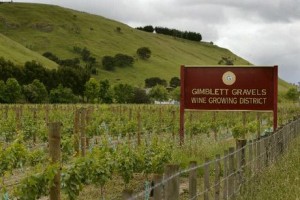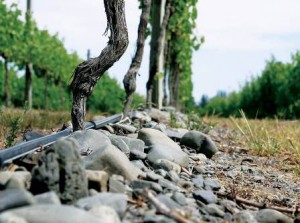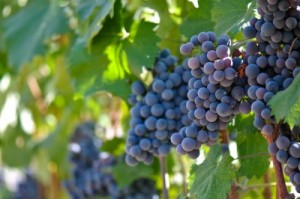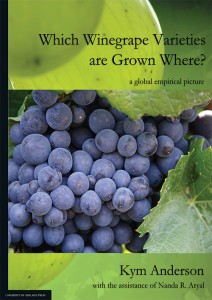
The Auster Agricola
It’s amazing the things the study of wine can lead you to. Do you know what “aerial topdressing is?” Neither did I, until I set about to research some of the more unique wines of New Zealand for SWE’s “Wines in the Dessert” event last May. It turns out that aerial topdressing is an agricultural application that uses aircraft to spread fertilizers over farmland. The practice was developed in New Zealand in the 1940’s. A special plane known as “The Auster Agricola” was designed specifically for the new industry, which was quickly adopted elsewhere, although it remains a New Zealand specialty.
It turns out aerial topdressing is the reason that Gimblett Gravels, one of the most unique wine terroirs in the new world, came to be. You know there’s a story there!
The story begins in 1980, in the Hawke’s Bay Region of New Zealand. Hawke’s Bay, being at the east end of one of the widest portions of the islands of New Zealand, is one of the warmest sections of the country and for that reason is one of the few places where red grapes (other than Pinot Noir) can fully ripen. Due to its geography, the area gets less rain, and more sun than other areas of the country.
Within the Hawke’s Bay Region, the forgotten area down at the end of Gimblett Road was considered to be the poorest, least productive land in the area; too infertile even to use to graze sheep, so nobody dared plant a thing. The area instead was given over to warehouses, strip malls, an army firing range, and a concrete company that used the area to mine for gravel.
 Chris Pask, a local businessman, owned a few vineyards in the Hawke’s Bay Region but often had difficulty getting his Cabernet Sauvignon to fully ripen. Coincidentally, Chris’ day job, aerial topdressing, had him flying over the area near the end of Gimblett Road every day. One day, as he looked down on the dry, dusty wasteland, he had a crazy idea that maybe his grapes would have a chance of ripening if planted there.
Chris Pask, a local businessman, owned a few vineyards in the Hawke’s Bay Region but often had difficulty getting his Cabernet Sauvignon to fully ripen. Coincidentally, Chris’ day job, aerial topdressing, had him flying over the area near the end of Gimblett Road every day. One day, as he looked down on the dry, dusty wasteland, he had a crazy idea that maybe his grapes would have a chance of ripening if planted there.
In 1981, risking ridicule, he bought nearly 100 acres at the end of Gimblett Road and planted Cabernet Sauvignon. His first wine from these newly planted vines, produced with the 1985 vintage, was released to wide acclaim. Assured that he wasn’t crazy, Pask proceeded to buy more vineyard land and plant more grapes, including Malbec, Syrah, Viognier, and Sauvignon Blanc in addition to Cabernet Sauvignon.
Despite Pask’s initial success, it was no easy task getting the region zoned for viticulture and wine making. As a matter of fact, it was not until 1992 that all the legal battles were won, enabling wine making facilities and full-scale viticulture to come to the area. As one can well imagine, a land stampede soon followed as companies such as Babich and Villa Maria set up shop. Malls gave way to Merlot, warehouses became wineries, and the concrete company at the end of Gimblett Road gave up their gravel dreams and sold their land to a winery. The Gimblett Gravels Winegrowing District now has almost 2,000 acres of vineyards.
 The Gimblett Gravels region is strictly determined by its soil. The unique gravelly soils of the region are the result of a huge flood on the Old Ngaruroro River in the 1860’s. Due to the heat retention of the gravelly soil, Gimblett Gravels is warmer during the day in summer and autumn than the surrounding areas of Hawke’s Bay. The evenings are also warmer due to the heat retention of the stony ground. It is this extra heat that allows red grapes, including Syrah, Cabernet Sauvignon, and Merlot, to ripen so well here, and puts Gimblett Gravels among the world’s best terroirs for growing fine wine.
The Gimblett Gravels region is strictly determined by its soil. The unique gravelly soils of the region are the result of a huge flood on the Old Ngaruroro River in the 1860’s. Due to the heat retention of the gravelly soil, Gimblett Gravels is warmer during the day in summer and autumn than the surrounding areas of Hawke’s Bay. The evenings are also warmer due to the heat retention of the stony ground. It is this extra heat that allows red grapes, including Syrah, Cabernet Sauvignon, and Merlot, to ripen so well here, and puts Gimblett Gravels among the world’s best terroirs for growing fine wine.
For more information:
Post written by Jane A. Nickles, CWE (your SWE Blog Administrator)
 Other interesting pieces of information include the top five winegrapes that have increased in vineyard volume over the past ten years, which are: Tempranillo (#1), Syrah, Cabernet Sauvignon, Merlot, and Chardonnay (#5). Accordingly, the five grapes that have declined the most in vineyard volume are Airen at #1, followed by Mazuelo, Grasevina, Garnacha Tinta, and Trebbiano Toscano.
Other interesting pieces of information include the top five winegrapes that have increased in vineyard volume over the past ten years, which are: Tempranillo (#1), Syrah, Cabernet Sauvignon, Merlot, and Chardonnay (#5). Accordingly, the five grapes that have declined the most in vineyard volume are Airen at #1, followed by Mazuelo, Grasevina, Garnacha Tinta, and Trebbiano Toscano.


